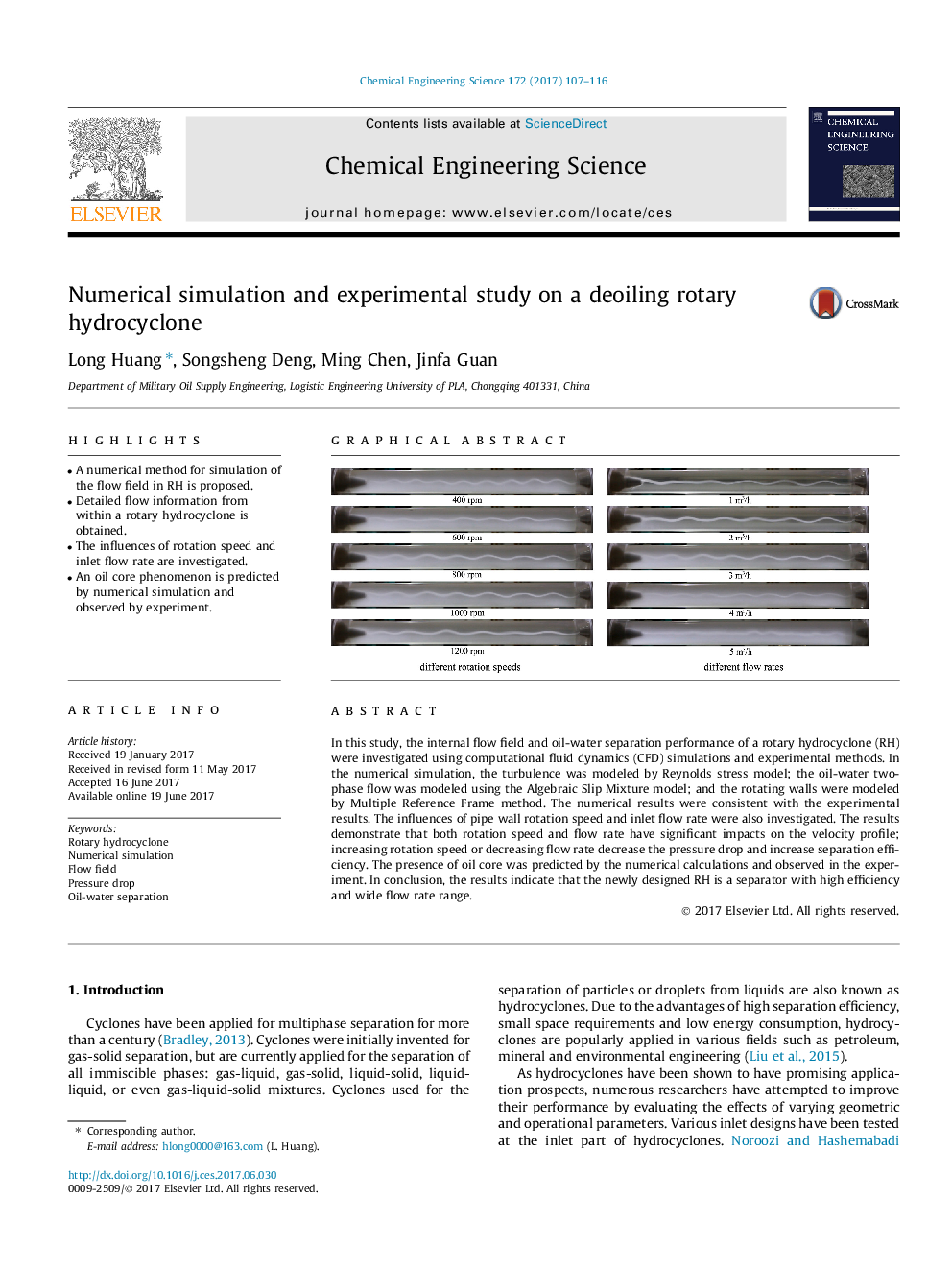| Article ID | Journal | Published Year | Pages | File Type |
|---|---|---|---|---|
| 6466987 | Chemical Engineering Science | 2017 | 10 Pages |
â¢A numerical method for simulation of the flow field in RH is proposed.â¢Detailed flow information from within a rotary hydrocyclone is obtained.â¢The influences of rotation speed and inlet flow rate are investigated.â¢An oil core phenomenon is predicted by numerical simulation and observed by experiment.
In this study, the internal flow field and oil-water separation performance of a rotary hydrocyclone (RH) were investigated using computational fluid dynamics (CFD) simulations and experimental methods. In the numerical simulation, the turbulence was modeled by Reynolds stress model; the oil-water two-phase flow was modeled using the Algebraic Slip Mixture model; and the rotating walls were modeled by Multiple Reference Frame method. The numerical results were consistent with the experimental results. The influences of pipe wall rotation speed and inlet flow rate were also investigated. The results demonstrate that both rotation speed and flow rate have significant impacts on the velocity profile; increasing rotation speed or decreasing flow rate decrease the pressure drop and increase separation efficiency. The presence of oil core was predicted by the numerical calculations and observed in the experiment. In conclusion, the results indicate that the newly designed RH is a separator with high efficiency and wide flow rate range.
Graphical abstractDownload high-res image (305KB)Download full-size image
